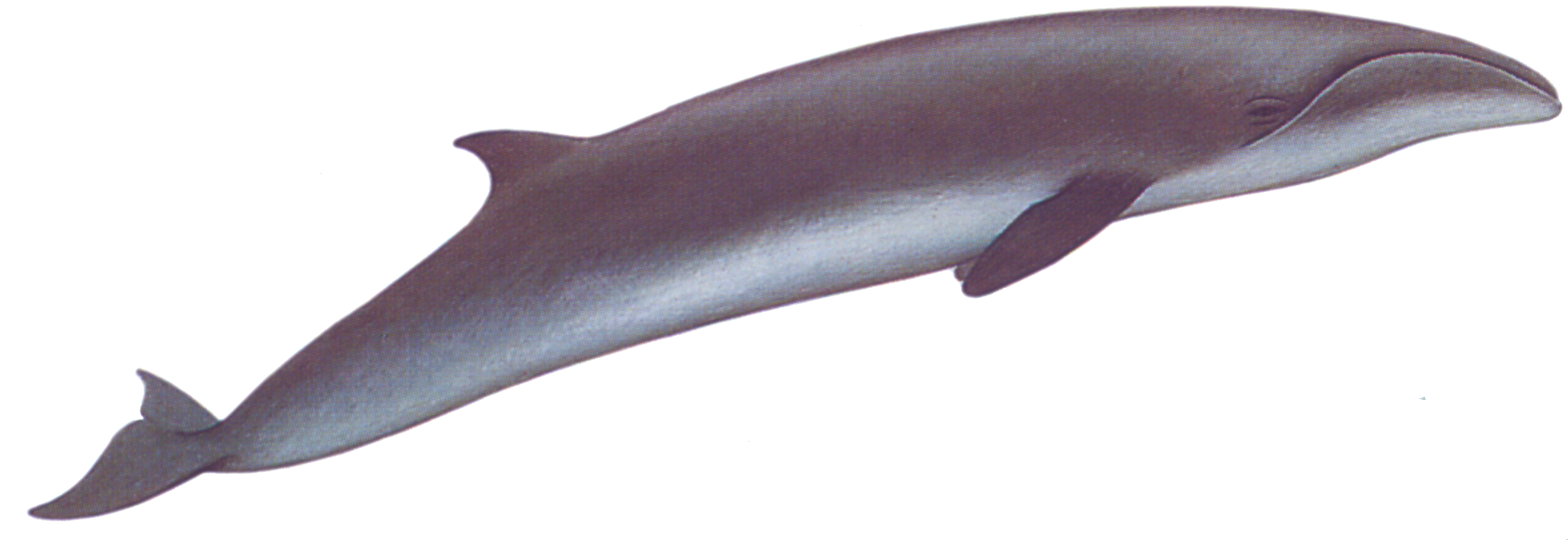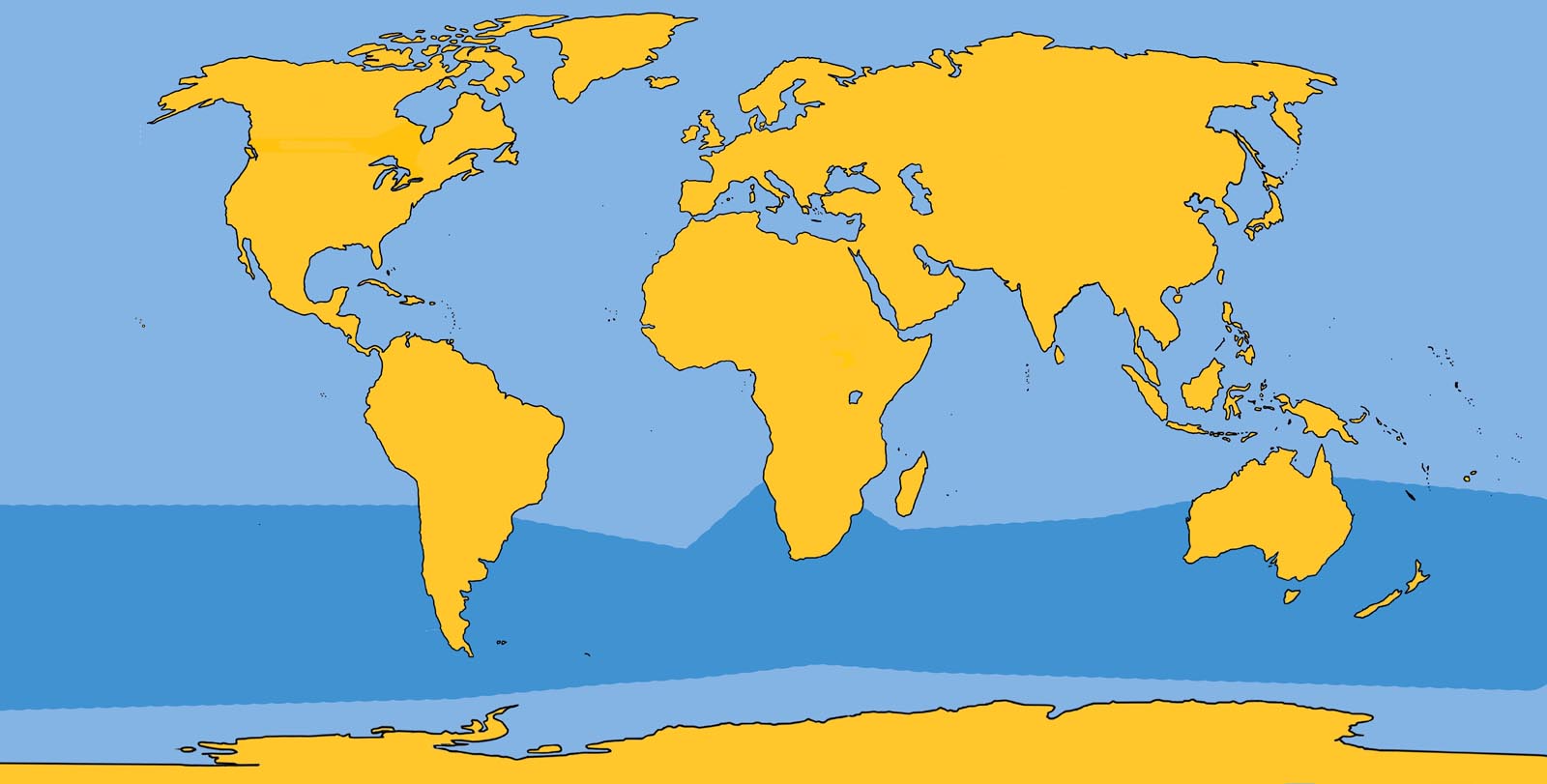
Family: Balaenidae
Genus: Caperea
Species: C. marginata (Gray, 1846)
Although the pygmy right whale actually does not particularly resemble its larger namesake, a variety of characteristics, including the highly arched jaw, are similar to those of the other Balaenidae. Unlike the right or bowhead whales, the pygmy right whale has a dorsal fin, and from the surface this animal is often mistaken for a minke whale. For this reason, confirmed sightings of pygmy right whales are very rare. The pygmy right whale is the smallest of all the great whales, and its movements when swimming is more like that of a dolphin than a great whale.
Physical Description: They have a stocky body with bowed lower jaw whose arch is believed to become more pronounced as the animal ages. It is this characteristic that causes them to resemble and be named after the right whale. The lower jaw projects slightly beyond the upper.
Color: They have a dark dorsal side which may turn increasingly darker as the animal ages. The dorsal blends into the gray-white region.
Fins and Flukes: A prominent falcate dorsal fin is located two-thirds of the way down the body. The flippers are small and rounded, located far under the body. The flukes are broad with a well-developed median notch.
Length and Weight: Pygmy right whales reach 20 ft (.1 m) and about 5 tons (4,500 kg). Females are slightly larger.
Throat Grooves: Two throat grooves correspond to the line of the lower jaw bone; these grooves may be used for feeding in a manner similar to that of such cetaceans as the gray whale and the beaked and bottlenose whales.
Baleen Plates: There are 230 pairs on each side of the upper jaw, yellow-white with a white outer edge. The plates may darken with age. They reach about 27 in (69 cm) in length.
Feeding: The stomach contents of two animals contained copepods.
Breathing and Diving: Limited observation confirms surfacing every 50 seconds for about 5 minutes. Longer dives last 4 to 5 minutes. They do not raise their flukes out of the water prior to long dives. The head and lower jaw often rise out of the water when the whale surfaces. The blow is small and inconspicuous.
Mating and Breeding: Little is known. Newborn are thought to be 4.5 ft (1.5 m) long.
Herding: These whales apparently live alone for the most part, although herds of up to 8 animals have been observed.
Distribution: They are known only from the Southern Hemisphere. Sightings and strandings have taken place in southeastern and southwestern Australia, Tasmania, southern New Zealand, South Africa, the Falkland Islands, and the Crozet Islands in Antarctica. Also reports off Buenos Aires, Argentina.
Migration: A suggested migration corresponds with the paucity or abundance of food. Juveniles of South Africa are thought to migrate to inshore waters in spring and summer.
PYGMY RIGHT WHALE DISTRIBUTION








